In today’s digital age, content distribution plays a crucial role in the success of your SaaS (Software as a Service) company. With the growing competition in the industry, it’s not enough to create great content; you also need to ensure that it reaches the right audience. Understanding content distribution for SaaS businesses and implementing effective strategies can help you increase visibility, generate leads, and ultimately drive conversions.
Understanding Content Distribution
Content distribution refers to the process of promoting and disseminating your content to a wider audience. It involves strategically sharing your content across various channels and platforms to ensure maximum reach and engagement. While creating high-quality and valuable content is essential, distributing it effectively allows you to amplify its impact and increase its chances of reaching your target audience.
There are several key factors to consider when it comes to content distribution. First and foremost, it is important to identify your target audience. Understanding who your content is intended for will help you tailor your distribution strategy to reach the right people. Knowing your audience’s preferences, interests, and demographics allows you to select the most appropriate channels and platforms to distribute your content.
The Importance of Content Distribution in SaaS
In the SaaS industry, where competition is fierce and customer acquisition costs are high, content distribution is critical in establishing brand authority, building trust, and attracting potential customers. By distributing your content to the right channels, you can reach a wider audience, increase brand visibility, and position your company as an industry thought leader.
Moreover, content distribution in the SaaS industry is not just about reaching a larger audience but also about nurturing existing customers. By consistently sharing valuable content with your customers, you can deepen their engagement, encourage loyalty, and ultimately increase customer retention.
Key Elements of a Successful Content Distribution Strategy
A successful content distribution strategy should encompass various elements that work together to ensure maximum reach and engagement. These elements include:
- Identifying your target audience: Understanding your target audience’s needs, preferences, and behaviors is crucial in crafting a content distribution strategy that resonates with them. By conducting market research and analyzing customer data, you can gain valuable insights into who your audience is and how to reach them effectively.
- Choosing the right distribution channels: There are numerous channels and platforms available for content distribution, including social media, email marketing, influencer partnerships, and more. Select channels that align with your target audience’s preferences and habits. For example, focusing on visual content and leveraging Instagram’s features can be highly effective if your audience is active on Instagram.
- Creating compelling and shareable content: To maximize the impact of your content distribution efforts, it is essential to create content that is not only valuable but also engaging and shareable. This can include informative blog posts, visually appealing infographics, entertaining videos, or interactive quizzes. You can expand your reach organically by providing content that resonates with your audience and encourages them to share it with others.
- Optimizing content for search engines: Search engine optimization (SEO) is crucial to content distribution. By optimizing your content for relevant keywords and ensuring proper meta tags, headings, and descriptions, you can improve your visibility in search engine results. This, in turn, can drive organic traffic to your website and increase the chances of your content being discovered and shared.
- Measuring and analyzing performance metrics: To continuously improve your content distribution strategy, measure and analyze your performance metrics. This can include tracking website traffic, engagement rates, social media metrics, and conversion rates. You can refine your approach and optimize your content distribution efforts by understanding what is working and what needs improvement.
By integrating these elements into your content distribution strategy, you can increase the effectiveness of your efforts and connect with your target audience more efficiently. Remember, content distribution is not a one-time task but an ongoing process that requires continuous monitoring, adaptation, and refinement to achieve optimal results.
Identifying Your Target Audience
Before effectively distributing your content, identify and understand your target audience. This involves defining your ideal customer profile and understanding their needs, preferences, and challenges.
When it comes to identifying your target audience, there are several key steps you need to take. One of the first steps is to create an ideal customer profile (ICP). This profile outlines the characteristics and demographics of your target audience, helping you understand who your content should be tailored to. Consider factors such as industry, company size, job roles, pain points, and goals. By having a clear understanding of your ideal customer, you can create content that resonates with them and addresses their specific needs.
But how do you better understand your audience’s needs and preferences? One effective way is through market research. Conducting thorough market research allows you to gather valuable insights about your target audience. You can analyze customer feedback, engage with your audience through surveys, social media, and forums, and even conduct interviews or focus groups. By actively listening to your audience, you can uncover their pain points, interests, and desires.
Another important aspect of understanding your audience is keeping up with the latest trends and industry news. By staying informed about what’s happening in your industry, you can better understand the challenges and preferences of your target audience. This knowledge can then be used to create timely, relevant, and valuable content for your audience.
Once you have gathered all the necessary information about your target audience, it’s time to put that knowledge into action. Use the insights you’ve gained to create content that addresses their specific needs and delivers value. Whether it’s through blog posts, videos, podcasts, or social media content, make sure that your content speaks directly to your target audience and provides them with the solutions they are looking for.
Remember, identifying and understanding your target audience is an ongoing process. As your business evolves and your audience changes, it’s important to continuously reassess and refine your understanding of your ideal customers. By doing so, you can ensure that your content remains relevant and impactful.
Defining Your Ideal Customer Profile
Start by creating an ideal customer profile (ICP) that outlines the characteristics and demographics of your target audience. Consider factors such as industry, company size, job roles, pain points, and goals. This will help you tailor your content distribution strategy to resonate with your ideal customers.
When defining your ideal customer profile, it’s important to go beyond just basic demographics. Dig deeper and consider factors such as their motivations, challenges, and aspirations. By understanding your target audience’s underlying needs and desires, you can create content that truly connects with them on a deeper level.
Additionally, don’t forget to consider the different segments within your target audience. Your ideal customer profile may vary depending on the specific products or services you offer. Take the time to identify and understand these different segments, as they may have unique needs and preferences that should be addressed in your content.
Understanding Your Audience’s Needs and Preferences
Next, gain a deeper understanding of your audience’s needs and preferences. Conduct market research, analyze customer feedback, and engage with your target audience through surveys, social media, and forums. By understanding their pain points and interests, you can create content that addresses their specific needs and delivers value.
Market research is essential for understanding your audience’s needs and preferences. It involves gathering and analyzing data about your target audience, such as their demographics, behaviors, and preferences. This can be done through various methods, including surveys, interviews, and focus groups.
Customer feedback is another valuable source of information. Actively seek feedback from your audience through channels such as customer support, social media, and online reviews. Pay attention to their comments, suggestions, and complaints. This feedback can provide valuable insights into what your audience likes, dislikes, and wants from your content.
Engaging with your target audience through surveys, social media, and forums is also crucial. These platforms allow you to directly interact with your audience, ask them questions, and listen to their opinions. By actively engaging with your audience, you can better understand their needs, preferences, and challenges.
Understanding your audience’s needs and preferences is an ongoing process. As trends and preferences change, it’s important to continuously gather feedback and adapt your content strategy accordingly. By staying in tune with your audience, you can ensure that your content remains relevant and valuable to them.
Content Distribution Channels for SaaS Companies
Once you have defined your target audience, it’s time to identify your SaaS company’s most effective content distribution channels. Here are some key channels to consider:
Leveraging Social Media for Content Distribution
Social media platforms such as LinkedIn, Twitter, and Facebook are powerful channels for content distribution. Create engaging and shareable content that aligns with each platform’s best practices. Leverage hashtags, engage with your audience, and participate in industry discussions to increase your content’s reach and visibility.
The Role of Email Marketing in Content Distribution
Email marketing continues to be an effective content distribution channel for SaaS companies. Build an email list of prospects and existing customers and send them targeted, personalized content that adds value. Use email automation tools to nurture leads and build strong relationships with your audience.
SEO and Content Distribution: A Powerful Combination
Search engine optimization (SEO) is critical in ensuring that your content reaches your target audience. Conduct keyword research, optimize your website and content for search engines, and consistently publish high-quality content. By ranking higher in search engine results, you can attract organic traffic and increase the visibility of your content.
Crafting a Content Distribution Plan
With your target audience identified and the right distribution channels selected, it’s time to craft a comprehensive content distribution plan. This plan should outline the goals, strategies, and tactics you will use to distribute your content effectively.
Setting Goals for Your Content Distribution
Start by setting specific, measurable goals for your content distribution efforts. Examples of goals can include increasing website traffic, generating leads, improving brand awareness, and driving conversions. By defining your goals, you can align your strategies and track the success of your content distribution plan.
Choosing the Right Channels for Distribution
Choose the most appropriate platforms for distributing your content based on your target audience and the channels you identified earlier. Consider the platform’s user demographics, engagement levels, and the type of content that performs best. Tailor your content to fit each platform’s unique characteristics for optimal engagement.
Scheduling and Automating Content Distribution
Consider scheduling and automating your content distribution to ensure consistency and save time. Use social media management tools to schedule posts, automate email workflows, and implement content distribution calendars. This allows you to have a consistent presence across channels and ensures that your content reaches your audience at the right time.
Measuring the Success of Your Content Distribution Strategy
As with any marketing effort, it is crucial to measure and analyze the success of your content distribution strategy. This allows you to identify areas for improvement and make data-driven decisions for optimizing your future distribution efforts.
Key Metrics to Track in Content Distribution
Some key metrics to track in content distribution include website traffic, social media engagement (likes, shares, comments), email open rates and click-through rates, conversion rates, and keyword rankings. By monitoring these metrics, you can gain insights into the effectiveness of your content distribution efforts and make adjustments as needed.
Adjusting Your Strategy Based on Performance Data
Regularly review and analyze the performance data of your content distribution channels. Identify patterns, trends, and areas where you can improve. Adjust your strategy based on these insights, whether it’s optimizing underperforming channels, doubling down on successful ones, or refining your content to better resonate with your audience.
Drive Meaningful Results for Your Business
Effective content distribution is critical for SaaS companies looking to reach the right audience. By understanding content distribution, identifying your target audience, leveraging the right channels, crafting a comprehensive plan, and measuring success, you can ensure that your valuable content reaches your ideal customers and drives meaningful results for your business.




